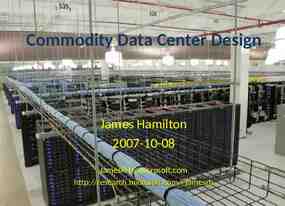Home and Community Based Services (HCBS) Settings Rule D.C.’s
38 Slides122.34 KB
Home and Community Based Services (HCBS) Settings Rule D.C.’s Transition Plan DEPARTMENT ON DIS ABILITY SERVICES COMMUNITY FORUM 12/1/2014
Goals for Today Discuss the CMS Home and Community Based Settings Rule (HCBS), with a focus on changes in the rules related to HCBS settings. Discuss DC’s approach to adopting these changes to our system – our Transition Plan (work plan). Get your feedback on and ideas about our Transition Plan. Share information about how you can continue to provide us your ideas and comments. 2
DC’s Medicaid HCBS Waiver DC’s Home and Community Based Services (HCBS) Waiver provides services and supports so that people with intellectual and developmental disabilities (IDD) are able to live at home and in the community. To receive Medicaid funds for a waiver, DC must follow federal CMS rules – including the new HCBS Settings Rule, published in January 2014. That rule requires that states review all of their HCBS settings and develop a transition plan with public comments to reach compliance with the new rule. 3
HCBS Settings Rule Title: Medicaid Program; State Plan Home and Community-Based Services, 5-Year Period for Waivers, Provider Payment Reassignment, and Home and Community-Based Setting Requirements for Community First Choice (Section 1915(k) of the Act) and Home and Community-Based Services (HCBS) Waivers (Section 1915(c) of the Act) or “The Settings Rule” Published in the Federal Register on 01/16/2014 Effective March 17, 2014 www.hcbsadvocacy.org 4
HCBS Settings Rule Describes traits of HCBS settings. (Our focus today.) Establishes guidelines for person-centered plans of care. Adds public input requirements for changes in services or rate. Allows states to group waiver populations together. 5
HCBS Settings Rule – Intent To ensure that people receiving long-term services and supports through home and community-based service (HCBS) programs are actually community-based, with full access to the benefits of community living and the opportunity to receive services in the most integrated setting appropriate. To enhance the quality of HCBS and provide protections to participants. 6
HCBS Settings The rule establishes: Standards for HCBS settings. Settings that are not HCBS. Settings that are presumed not to be HCBS. State compliance and transition requirements. 7
Standards for all HCBS Settings Integration with the community The setting must support full access by the person to the greater community, “including opportunities to seek employment and work in competitive integrated settings, engage in community life, control personal resources, and receive services in the community, to the same degree of access as [people] not receiving Medicaid HCBS.” 8
CMS Exploratory Questions: Integration Is the person aware of or have access to materials to become aware of activities occurring outside the HCBS setting? Does the person shop, attend religious services, schedule appointments, have lunch with family and friends in the community, as the person chooses? Are people moving about inside and outside the setting, as opposed to sitting by the front door? Do people in the setting have access to public transportation? Does the person have a checking or savings account or other means to control his or her funds? 9
Standards for all HCBS Settings Choice People must have a choice among setting options, including settings that are not disability-specific. CMS Exploratory Question Can the person identify other providers who render the services he or she receives? 10
Standards for all HCBS Settings Rights The setting must ensure people’s rights to privacy, dignity and respect, and freedom from coercion and restraint. 11
CMS Exploratory Questions: Rights Does staff talk to other staff about the person as if the person was not present or within earshot of other people living in the setting? Does staff address people in the manner in which the person would like to be addressed as opposed to routinely addressing people as “hon” or “sweetie”? Do people in the setting have different haircuts/ styles and color? Are people prohibited from engaging in legal activities? Is health information about people kept private? Are people’s schedules for PT, OT, medications, diet, etc. posted in a general area for all to view? 12
Standards for all HCBS Settings Independence The setting must optimize a person’s ability to make life choices, including choices related to daily activities, the physical environment, and with whom to interact. Similarly, the setting must facilitate choice regarding services and supports and who provides them. 13
CMS Exploratory Questions: Independence Does the person’s schedule vary from other people’s in the same setting? Does the person work in an integrated community setting? Does the person regularly participate in meaningful non-work activities in the community for the period of time the person desires. Is individual choice facilitated in a manner that leaves the person feeling empowered to make decisions? 14
Standards for Residential HCBS Settings People must have: Landlord-tenant protections. Lockable doors. Choice of roommates. Freedom to furnish and decorate their unit. Control of their own schedule. Access to food anytime. Visitors anytime. Physical accessibility. Any change to the above rules must be due to a specific need and explained in the person-centered plan. 15
CMS Exploratory Questions: Residential Can the person request an alternative meal if desired? Is the person required to sit at an assigned seat in a dining area? Does the person have access to such things as a tv, radio, and leisure activities that interest him or her and can he or she schedule such activities at his or her convenience? Does the person know he or she can request a change in roommate? Does the person have a lease or written residency agreement? Can the person close and lock his or her bedroom door? Bathroom door? Does the person have full access to typical facilities in a home such as a kitchen with cooking facilities, dining area, laundry and comfortable seating in the shared areas? 16
Settings That Are Not HCBS Nursing facilities Institutions for mental diseases (IMD) Intermediate care facilities for individuals with intellectual disabilities (ICF/IID) Hospitals 17
Settings That Are Presumed Not HCBS Settings in a publicly or privately-owned facility providing inpatient treatment. Settings on grounds of, or adjacent to, a public institution. Settings with the effect of isolating individuals from the broader community of individuals not receiving Medicaid HCBS. 18
Settings That Are Presumed Not HCBS For example: Independent living units and assisted living units would be presumed institutional if they are: Located in the same building as a nursing home or other facility providing inpatient treatment; or Located on the grounds of, or immediately adjacent to, a public institution. States that use these settings will be subject to an in-depth review process. 19
Transition Plans Required CMS expects all states to develop an HCBS transition plan that provides a comprehensive assessment of potential gaps in compliance with the new regulation, as well as strategies, timelines, and milestones for becoming compliant with the rule’s requirements in no more than 5 years from the effective date of the rule (March 17, 2019). CMS further requires that states seek input from the public in the development of this transition plan. 20
Transition Plans: Timing If waiver amendments are submitted within one year of the effective date of final rule: The state submits a plan in the renewal or amendment request detailing any actions necessary to achieve or document compliance with setting requirements for the specific waiver or amendment. Renewal or amendment approval will be contingent upon inclusion of an approved transition plan. Starts 120 days clock for Statewide transition plan for all waiver services. 21
Transition Plan: Public Input The state must: Provide a 30-day public notice and comment period on the plan the state intends to submit to CMS. Provide minimum of two statements of public notice and public input procedures. Ensure the full transition plan is available for public comment. Consider public comments. Modify the plan based on public comment, as appropriate. Submit evidence of public notice and summary of disposition of the comments. 22
DC’s Transition Plan Build on Current Capacity Building and Training Initiatives to Increase Opportunities for Competitive, Integrated Employment and Community Integration Examples: Discovery: Developing Positive Personal Profiles: Train the Trainer course on how to create Positive Personal Profiles a nationally recognized tool and process for assessing the vocational interests and goals of people and supporting career exploration and community integration activities. This training teaches participants how to create a Positive Personal Profile and adapt the traditional Job Search Plan to an Individual Job Search and Community Participation Plan that provides guidance to staff working with a person to help identify meaningful daytime and work experiences. DDS has renewed a contract with Dr. George Tilson to continue to offer such training opportunities in FY 2015. 23
DC’s Transition Plan Support for Roll Out of IDS: Training for DDA and providers on the new service, how to recruit and train staff, the development of formats for initial and ongoing Community Integration Plans, and how to conduct Community Mapping. DDS started an IDS Community of Practice and offers ongoing webinars and technical assistance for IDS providers that focus on specific topics of interest to the providers. Additionally, DDS created an IDS Toolkit, posted on the DDS website. DDS renewed a contract with Dr. Lisa Mills to continue to offer such training opportunities and support in FY 2015. Training and TA on Community Integration: DDS expanded it’s contract with Dr. Lisa Mills, to offer training and one-on-one technical assistance for Day and Vocational Providers to improve opportunities for community integration in all day and vocational settings. 24
DC’s Transition Plan Meaningful Days: DDS has issued a new RFP to provide training and technical assistance, to guide the creation of goals and activities for people receiving day and/or employment services so that people are engaged in active, stimulating, meaningful activities targeted to achieve outcomes in self-determination, making informed choices, improved communication to accomplish goals, employment or meaningful retirement, relationships, community inclusion, community contribution, and/or other skill building that enables them to live more independently and accomplish goals. Customized Employment: DDS supported the development of a CoP of providers who, in addition to implementing customized employment practices through their own agencies, also recently conducted a two-day training in which they trained additional staff from the provider community on customized employment. This training will be offered again in FY 2015. 25
DC’s Transition Plan Person Centered Thinking: (working with Michael Smull and his team, Support Development Associates) 7 trainers/ PCT Leaders within DDS. Offer additional train the trainer series in FY 2015. Working with 4 providers to become Person Centered Organizations. Providing training and TA to another 3 providers on PCT. Additional training for 3 of our PCT trainers, who are also family members of people with DD, on a curriculum to develop One Page Positive Profiles, specifically aimed for families of people with IDD. Launching People Planning Together, a comprehensive training and mentoring course that supports and empowers people who receive services to take a leadership role in planning the life they desire. 26
DC’s Transition Plan Waiver Changes in Place to Support Community Integration and Employment (11/2012 Renewal): Supported Living with Transportation provides flexible transportation to people receiving Supported Living services to increase opportunities for community engagement. Individualized Day Support (IDS) provides highly individualized structured activities that include social skills development and/ or vocational exploration and life skills training all in inclusive community settings. Incentivized rates for Supported Employment and IDS. 27
DC’s Transition Plan Proposed Waiver Amendments to Support Community Integration and Employment: Day Habilitation: Clarifies service definition for day habilitation to require meaningful adult activities and skills acquisition that support community integration and a person’s independence. Creates a small group option. Individualized Day Supports: Modifies IDS service definition to clarify that IDS includes the provision of opportunities that promote community socialization and involvement in activities, and the building and strengthening of relationships with others in the local community. Allows IDS to be combined with other day and employment supports for a total of forty (40) hours per week. Offers IDS in small groups (1:2) and one-to-one, based upon the person’s assessed need and, for limited times, based on ability to match the person with an appropriate peer to participate with for small group IDS. 28
DC’s Transition Plan Proposed Waiver Amendments to Support Community Integration and Employment: Supported Living and Supported Living with Transportation: Modifies the service definition to create more flexibility in the application of the reimbursed staffing hours and ratios, to better reflect the time individual persons may spend in their residence during the course of the day to be responsive to individualized person-centered plans. Provider Requirements: Adds the requirement that owneroperators of residential, day and vocational supports complete training in Person-Centered Thinking, Supported Decision-Making, and Supporting Community Integration. 29
DC’s Transition Plan Establish HCBS Settings Advisory Group: Project ACTION! DC Supporting Families Community of Practice Quality Trust for Individuals with Disabilities Georgetown University Center for Excellence in Developmental Disabilities DC Coalition of Providers Department of Health Care Finance Staff from across DDS (Service Coordination, Waiver Unit, Quality, PCT Leader, SODA, PCR, etc.) Others as needed Open meetings – will be published on the DDS calendar and you are welcome to attend. Minutes will be posted on the DDS Medicaid Waiver Amendment Information page. 30
DC’s Transition Plan Public forums and information sessions in November and December 2014. DC State-Level Self-Assessment: Work with Advisory group to review state regulations, licensing and certification requirements, monitoring, contracts, IT, training requirements, and other program policies, procedures and practices to see where we are supporting the HCBS Settings Rule and where changes are needed to support compliance. Will result in a list of areas where we need to make changes to the waiver, implementing regulations, etc. and guide next steps. Complete by March 31, 2015. 31
DC’s Transition Plan DC Provider Self-Assessment: Development of assessment tool with Advisory group in November 2014 to guide a critical self- review of provider policies, procedures, protocols, and practices. Training for providers on HCBS Settings Rule and tool in December 2014 and beyond, as needed. Providers create an assessment team that includes a cross section of their organization, including at least one executive, middle manager, and direct support professional, as well as people supported and their family members. Providers are encouraged to include advocates and other stakeholder in their assessment process. Return the tool to DDS by January 31, 2015. 32
DC’s Transition Plan DC Provider Self-Assessment: Providers to submit a Provider Transition Plan to DDS by January 31, 2015. DDS to analyze and validate at least 10% of provider selfassessments by March 31, 2015. Sample Question: Can people lock their bedroom doors? Rate 1 if not allowed, or allowed but only a few people take advantage of it. Rate 3, if allowed but only about ½ of the people take advantage of this. Rate 5, if almost everyone you support can and at least occasionally does. Include specific evidence of compliance. 33
DC’s Transition Plan DC Assessment by People in Supports & Families: Development of assessment tool with Advisory group in November 2014. Training for service coordinators and people we support on HCBS Settings Rule and tool in December 2014 and beyond, as needed. Assessments take place beginning in January 2015, during the person’s ISP meeting (or meeting to amend the ISP). DDS QMD will compile and share data for compliance and to support informed choice of providers. Sample question: How important is it to you to lock your bedroom door? (Rate 1 – 5) How often are you able to lock your bedroom door? (Rate 1 – 5) 34
DC’s Transition Plan Review of National Core Indicators data and data from DDS’s external monitors DDS QMD will review the results of NCI Adult Consumer Survey and Family Surveys, reports from the Evans Court Monitor, and reports from the Quality Trust for Individuals with Disabilities to assess where indicators suggest systemic evidence of non-compliance or need for remediation with the HCBS Settings Rule. 35
DC’s Transition Plan Additional Steps: Analyze state and provider assessments and submit to CMS an amendment to this Transition Plan with specific remediation activities (specifically including but not limited to revisions of rules, regulations, licensing requirements, certifications processes, policies, protocols, practices and contracts) and milestones for achieving compliance with the HCBS Settings Rule. (August 2015) Facilitate a CoP for providers and offer continuing training and technical assistance to support compliance. 36
DC’s Transition Plan Strategies to Ensure Ongoing Compliance with HCBS Settings Rule: Incorporating the assessment by the person into all initial and annual ISP meetings. Quality assurance methodologies will incorporate monitoring performance measures that ensure compliance with the HCBS Settings Rule. Provider certification and licensing requirements will incorporate requirements that reflect compliance with the HCBS Settings Rule. Continued review of NCI data and external monitoring data to support its ongoing compliance monitoring efforts. 37
Questions or Comments Oral comments will be accepted and entered into the public record today. You may submit written comments to: Laura L. Nuss Director DC Department on Disability Services 1125 15th Street, NW Washington, D.C. 20005 Or via email to [email protected]. For more information: Erin Leveton, Program Manager, DDS State Office of Disability Administration, (202) 7301754 [email protected] 38











































